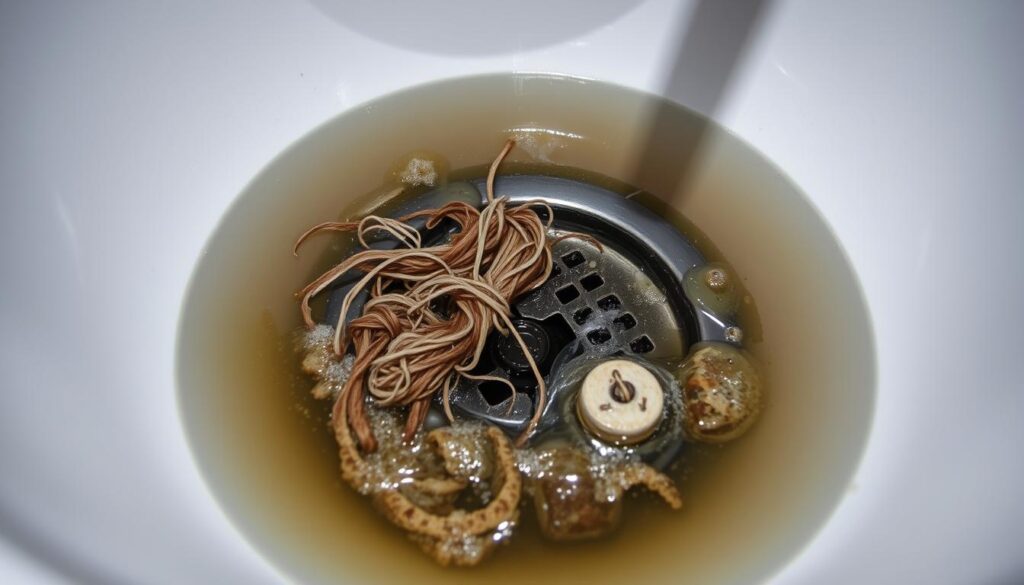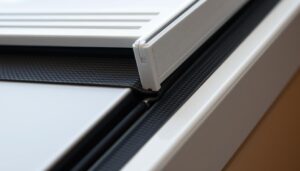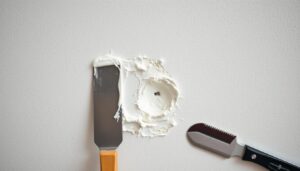Are you tired of dealing with a sink that drains at a snail’s pace? Slow drains can be frustrating and, if left unchecked, may lead to more serious plumbing issues.
The culprit behind a sluggish drain is often a buildup of hair, soap scum, and grease that accumulates in your pipes over time. This can cause water to back up, resulting in an unpleasant experience when washing your hands or cleaning dishes.
Fortunately, there are several effective methods to tackle the problem without calling a professional plumber. By understanding the causes of clogs and implementing simple DIY solutions, you can restore proper drainage to your sink and prevent future blockages.
Key Takeaways
- Identify the causes of slow drains in your sink.
- Learn effective DIY methods to clear blockages.
- Discover preventative measures to maintain free-flowing drains.
- Understand the importance of regular maintenance for your sink’s drainage system.
- Explore solutions suitable for both bathroom and kitchen sinks.
Understanding Why Your Sink Drains Slowly
A slow-draining sink can be a frustrating problem, but understanding its causes is key to resolving it. The first step to diagnosing a blocked sink is to determine if the flow has slowed down or stopped entirely.
If the water is moving slowly, this suggests a build-up of debris in your pipes. The sight of grey dishwater sitting stagnant in the sink is one that many homeowners dread.
Common Causes of Slow Drains
Several factors contribute to slow-draining sinks. Hair, soap, and grease are common culprits that can accumulate in your pipes, causing a blockage. Additionally, food particles and other debris can also contribute to the slow drain problem.
Signs Your Sink Needs Unclogging
There are several warning signs that indicate your bathroom sink or kitchen sink requires unclogging beyond just slow drainage. These include:
- Water pooling in the sink basin and taking longer than usual to drain away.
- Gurgling sounds coming from the drain, suggesting air is trapped in the pipes.
- Unpleasant odours emanating from the drain, indicating decomposing organic matter.
- Visible debris around the drain opening or stopper mechanism.
Recognising these signs early can help you address the issue before it becomes a more significant problem.
Simple DIY Methods for Unclogging a Slow-Draining Sink
If you’re struggling with a sink that drains slowly, there are a few easy DIY techniques you can try. A slow-draining sink can be caused by various factors, including grease buildup, hair, and other debris. Fortunately, you can resolve this issue without calling a professional plumber.
Boiling Water Method
One of the simplest methods to unclog a slow-draining sink is by using boiling water. Pouring boiling water down the drain can help dissolve grease and other substances causing the blockage. This method is particularly effective for kitchen sinks where grease is a common culprit.
Baking Soda and Vinegar Solution
Another effective DIY method involves using a mixture of baking soda and vinegar. Pour 1/2 cup of baking soda down the drain, followed by 1/2 cup of vinegar. Let the mixture sit for a few hours or overnight before rinsing with hot water. This natural solution can help break down tough blockages without damaging your pipes.

Dish Soap for Greasy Clogs
For kitchen sinks clogged with grease, dish soap can be particularly effective. Pour a generous amount of dish soap down the drain, followed by hot water to carry the dissolved grease away. For stubborn grease clogs, letting the soap sit in the drain for 30 minutes before flushing can improve results. Regular use of dish soap when washing greasy dishes can also help prevent buildup from forming in the first place.
| Method | Effectiveness | Recommended For |
|---|---|---|
| Boiling Water | High | Grease and oil buildup |
| Baking Soda and Vinegar | High | Tough blockages, natural solution |
| Dish Soap | Medium to High | Greasy clogs in kitchen sinks |
Using Basic Tools to Clear Your Drain
You don’t need to be a professional plumber to clear a sink drain; basic tools can do the trick. With the right equipment, you can effectively remove blockages and get your sink draining properly again.
Drain Zip Tools for Hair and Debris
Drain Zip tools are designed to remove hair and other debris that can clog your sink drain. These tools are typically long and flexible, allowing you to reach deep into the pipe to remove blockages.
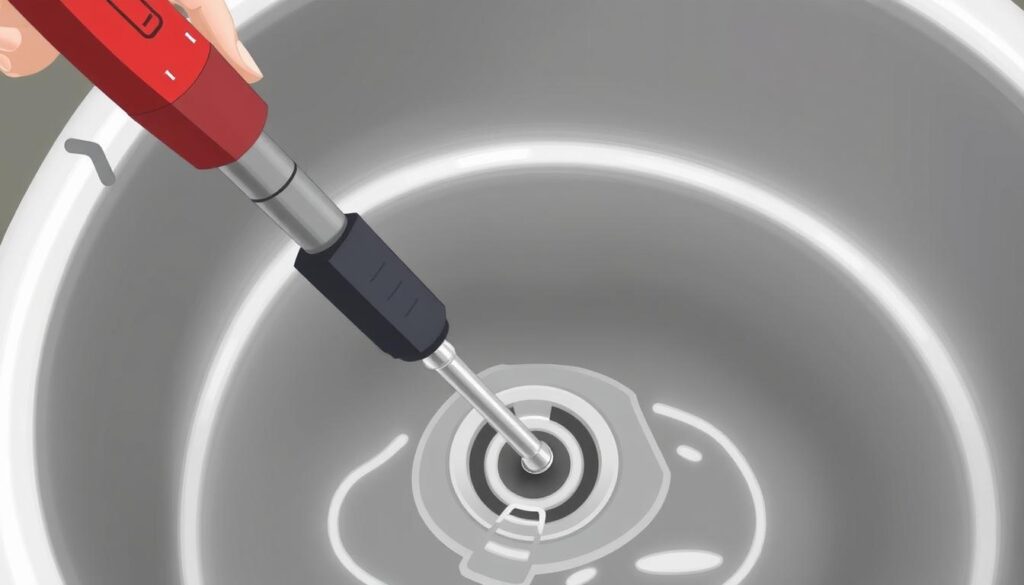
Plunger Techniques for Sink Drains
A plunger is a simple yet effective tool for clearing sink drains. To use a plunger effectively, cover the sink overflow with a rag or duct tape to create a seal, then place the plunger over the drain and press down to create suction. Vigorously move the plunger up and down to loosen and dislodge the clog.
For sinks with overflow openings, it’s essential to block these to ensure proper pressure buildup during plunging. The amount of water in the sink also affects plunging effectiveness; having enough water to cover the plunger is crucial.
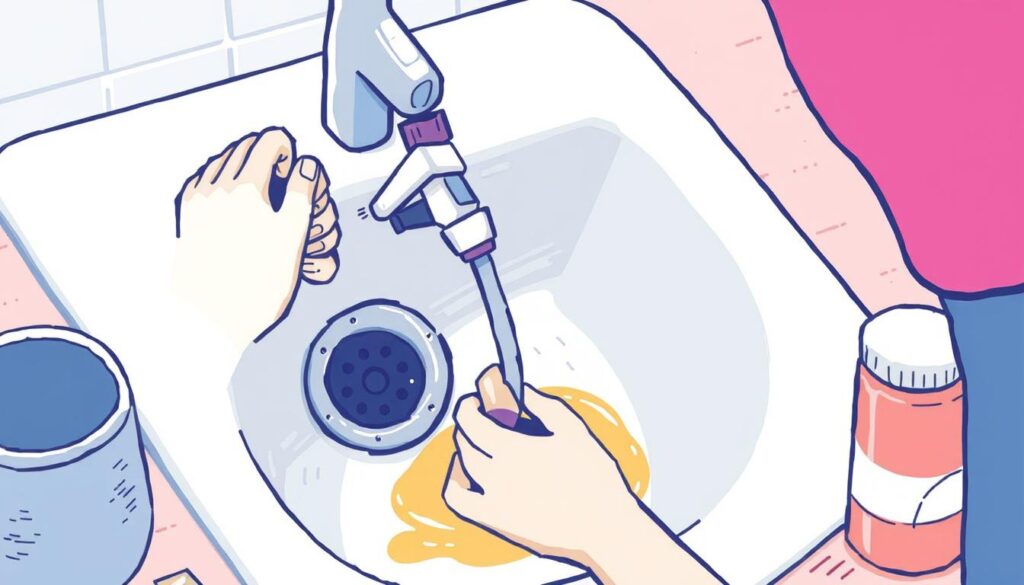
Removing and Cleaning Sink Components
When dealing with a slow-draining sink, it’s essential to inspect and clean its components thoroughly. Often, the issue lies not just with the drain itself but with other parts of the sink that can accumulate debris and buildup.
How to Remove and Clean the Sink Stopper
The sink stopper is a common culprit behind slow drainage. To clean it, you’ll first need to remove it. This usually involves unscrewing the stopper or pivot rod. Once removed, clean the stopper with soap and warm water, paying particular attention to any areas with visible debris or buildup. After cleaning, replace the stopper and test the drain.
Cleaning the Sink Overflow
The sink overflow is another area where debris and buildup can collect, contributing to slow drainage. To clean it, use a small brush, like an old toothbrush, to scrub the visible parts of the overflow opening. For a deeper clean, you can use a disinfecting solution and a flexible cleaning tool to reach further into the overflow channel. Regular cleaning of the overflow can improve overall sink drainage and prevent bacterial growth.
| Component | Cleaning Method |
|---|---|
| Sink Stopper | Remove, soap, and warm water |
| Sink Overflow | Small brush, disinfecting solution, flexible cleaning tool |
Advanced Methods for Stubborn Clogs
If your sink drain remains clogged after trying basic methods, it’s time to explore advanced solutions. For stubborn clogs, two effective techniques involve using a drain snake and unclogging the P-trap.
Using a Drain Snake Effectively
A drain snake, also known as an auger, is a long, flexible rod that can be inserted into the drain to break up or retrieve clogs. To use a drain snake effectively, feed the cable into the drain until you feel resistance, then rotate the handle to break up the clog. For more information on unclogging sinks, you can visit This Old House’s plumbing section.
Unclogging the P-Trap
The P-trap is a curved pipe under the sink that can accumulate debris, causing clogs. To unclog it, first turn off the water supply to the sink. Then, use a wrench to loosen the slip nuts holding the P-trap in place. Once removed, clean the pipe thoroughly before reinstalling it. Ensure that the connections are secure to prevent leaks.
When working with older homes, be aware that pipe materials may vary, such as PVC or metal traps, requiring special considerations during the cleaning process.
Commercial Products and Their Effectiveness
To tackle stubborn clogs, it’s worth exploring the range of commercial products available. These products can offer a quick solution to your sink’s drainage issues.
Chemical Drain Cleaners: Pros and Cons
Chemical drain cleaners can be effective at clearing clogs but come with their own set of drawbacks. They can damage your pipes and harm the environment. You should weigh these pros and cons before deciding to use them.
Enzymatic Cleaners for Regular Maintenance
Enzymatic cleaners are a more eco-friendly solution for maintaining your sink’s drainage. They use natural enzymes or bacteria to digest organic matter causing clogs, making them gentler on your pipes and the environment. These cleaners are particularly effective for regular maintenance, helping to prevent clogs rather than clearing severe blockages.
For homes with septic systems, enzymatic cleaners are often the preferred choice as they don’t kill beneficial bacteria. You can use these cleaners in your kitchen sink to break down food waste and grease that regularly enter the drainage system.
Preventing Future Sink Blockages
Preventing sink blockages requires a combination of good daily habits and regular maintenance. By adopting these practices, you can significantly reduce the likelihood of dealing with a clogged sink.
Daily Habits to Keep Drains Clear
To maintain a free-flowing sink drain, it’s essential to be mindful of what goes down the drain. Regularly flushing your sink with hot water can help dissolve grease and other substances that might cause blockages. Additionally, cleaning the sink stopper regularly by removing any hair and debris is crucial.
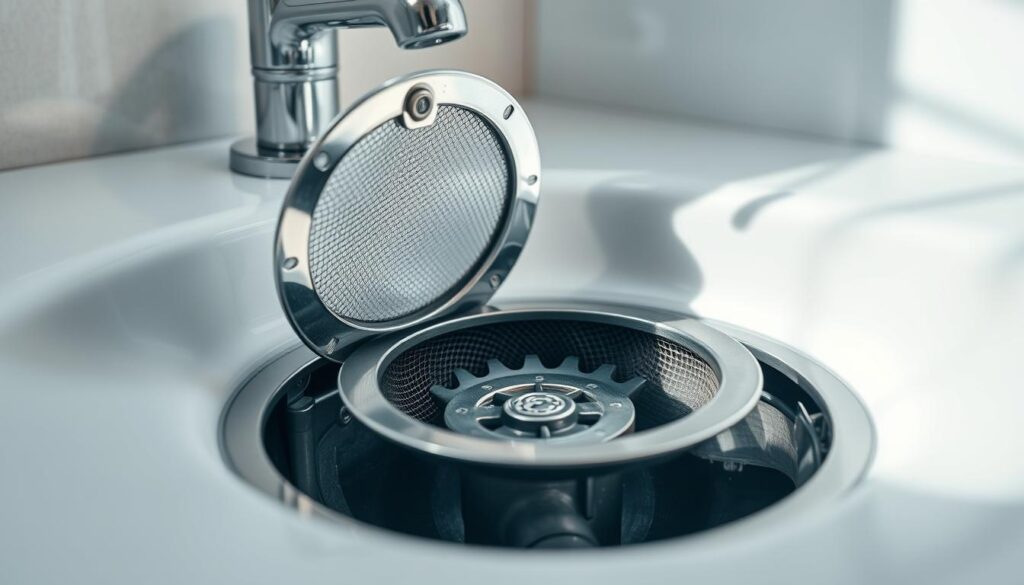
Regular Maintenance Schedule
Establishing a regular maintenance schedule can help prevent sink blockages. This might include weekly flushing with hot water, monthly cleaning of the sink stopper, and using preventative treatments like baking soda and vinegar. Quarterly deep cleaning of overflow channels and P-traps can also catch potential problems before they become serious clogs.
When to Call a Professional Plumber
Persistent clogs that don’t respond to DIY fixes may indicate a more serious issue that requires professional plumbing expertise. If your sink or other drains remain clogged after attempting the above methods, it may be time to seek help from a plumber.
Certain warning signs indicate more serious plumbing issues that shouldn’t be tackled without proper training and equipment. For instance, if multiple drains are clogging simultaneously, it often indicates a problem in the main sewer line rather than individual fixtures.
When selecting a plumber, check for reviews on independent sites like Checkatrade to ensure you’re hiring a qualified professional. While many plumbers charge a call-out fee, their expertise can provide a more long-lasting solution to your drain issues.
Conclusion
You can tackle the issue of a slow-draining sink with simple DIY methods. By understanding the causes of slow drains, you can choose the most effective solution for your specific situation. Regular maintenance is key to preventing future clogs. Start with simple techniques before moving to more advanced solutions. Investing time in proper drain care saves money and frustration in the long run. With the right approach, you can resolve the problem and keep your sink draining freely. Effective unclogging a slow-draining sink is achievable with the right techniques.
